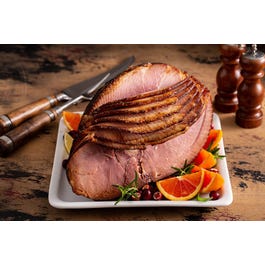
[ad_1]
Springtime is right here and it brings very particular holidays. Spring holidays are a good time for households to arrange their favourite dishes and take part in enjoyable actions, like egg hunts and picnics. To maintain your family members protected and stop meals poisoning, you will need to comply with correct meals security practices when purchasing, making ready, and serving these vacation dishes. Meat and eggs are meals requiring particular dealing with to maintain them protected.
Eggs
Eggs are a well-liked picnic dish, and enjoyable to brighten to make use of for egg hunts. But when not dealt with correctly, in addition they might be the supply of foodborne sickness. When buying your eggs, examine them to make sure they’re all nonetheless intact. Get them dwelling as rapidly as you possibly can, and retailer them within the fridge at 40°F or beneath of their authentic carton. When you’re able to cook dinner them for recipes or to dye, wash your fingers and surfaces earlier than and after dealing with the uncooked eggs, and funky and retailer them within the fridge till you might be prepared to make use of them. When dyeing eggs, just be sure you are utilizing food-grade dye if you happen to plan to eat them afterwards.
Plastic eggs are finest for egg hunts and decorations. For those who plan to make use of hard-boiled eggs, ensure that they don’t seem to be at room temperature for longer than 2 hours and wash them earlier than consuming. If they’re left at room temperature for longer than 2 hours, don’t eat them.
Getting ready Meat
Widespread meats for spring holidays are ham, beef, and lamb. Much like eggs, when buying meat, examine the packaging to ensure it’s nonetheless intact. Place meat in plastic luggage offered on the meat counter and retailer it individually in your purchasing cart to stop meat juices from leaking on different objects in your cart. When you get dwelling, refrigerate the meat at 40°F or beneath, or freeze it instantly. If freezing the meat, you possibly can defrost it safely within the fridge, underneath chilly working water, or within the microwave if it’s a small amount that you simply plan to cook dinner instantly. Defrosting can take a number of days within the fridge if it’s a bigger piece of meat, so make sure to plan forward. When making ready the meat, wash your fingers and surfaces equivalent to reducing boards and counter tops earlier than and after dealing with. Please word that it’s not beneficial to scrub meat earlier than preparation.
To forestall meals poisoning, meat must be cooked to a particular temperature to kill any micro organism that could be current. In response to the USDA Meals Security and Inspection Service, the inner temperature of the meat must be taken with a calibrated meals thermometer and attain the next temperatures:
-
- Ham that’s recent or smoked, and beef or lamb must be cooked to an inside temperature of 145°F and allowed to relaxation for no less than 3 minutes.
-
- Absolutely cooked ham is fit for human consumption from the bundle with out reheating; nonetheless, if reheating is desired, test the packaging for a USDA stamp and warmth to an inside temperature of 140°F. (If there is no such thing as a stamp, the ham was not packaged in a USDA-inspected plant, so it must be heated to 165°F.) (USDA Meals Security and Inspection Service, 2021)
Many households get pleasure from leftovers after vacation celebrations are over. Make sure to devour all leftovers inside 3-4 days and if serving them sizzling, re-heat them to 165°F.
[ad_2]
Supply hyperlink






